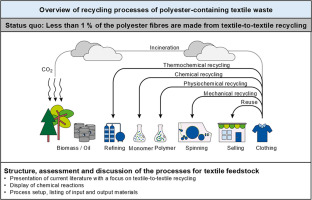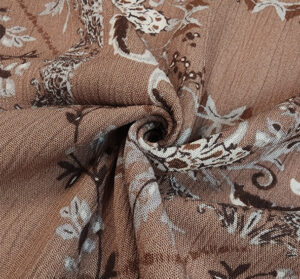Can You Recycle Polyester and Flannel Fabrics?

Fashion enthusiasts and sewing aficionados often encounter the challenge of fabric compatibility. Understanding how different materials interact is crucial for creating garments that are not only stylish but also durable. In this article, we’ll explore the compatibility of polyester and flannel fabrics, examining their properties and offering practical sewing and styling tips.
Compatibility Analysis
Can you recycle polyester and flannel fabrics together? The short answer is yes, but with some considerations. Polyester, a synthetic fiber, and flannel, typically made from cotton or wool, can be used together in projects. However, their distinct characteristics require thoughtful handling.
Why They Work Together
- Texture and Weight: Polyester is smooth and lightweight, while flannel is soft and slightly heavier. This contrast can create visually interesting garments.
- Stretch and Durability: Polyester offers elasticity, whereas flannel provides warmth and durability. Together, they can enhance comfort and performance.
- Care Requirements: Polyester is easy to care for, while flannel requires more attention. Balancing their care needs is essential for longevity.
Fabric Properties Comparison Table
| Property | Polyester | Flannel |
|---|---|---|
| Fiber Content | Synthetic | Natural (cotton/wool) |
| Weight & Thickness | Lightweight | Medium to heavy |
| Breathability | Moderate | High |
| Moisture-Wicking | Yes | Limited |
| Stretch & Elasticity | High | Low |
| Wrinkle Resistance | High | Moderate |
| Care Instructions | Machine wash, low heat dry | Gentle wash, air dry |
| Durability | High | Moderate |
Benefits of Mixing These Fabrics
Combining polyester and flannel offers several advantages:
- Enhanced Texture: The smoothness of polyester against the softness of flannel creates a rich tactile experience.
- Improved Comfort: Polyester’s moisture-wicking properties complement flannel’s warmth.
- Better Drape: The combination improves garment flow and movement.
- Cost-Effectiveness: Polyester is affordable, making it a budget-friendly option to pair with pricier flannel.
- Seasonal Versatility: This blend is suitable for both warm and cool weather.
- Design Possibilities: Mixing these fabrics allows for creative designs in both fashion and home decor.
Potential Challenges
Despite their benefits, mixing polyester and flannel presents challenges:
- Different Shrinkage Rates: Pre-wash fabrics to minimize size discrepancies.
- Conflicting Care Requirements: Use gentle cycles and air drying to accommodate both materials.
- Texture Clash or Pilling: Test fabric swatches to ensure compatibility.
- Seam Puckering: Use appropriate interfacing and stabilizers.
- Color Bleeding or Fading: Wash separately before combining.
Practical Solutions
- Pre-treat fabrics to prevent color transfer.
- Use a walking foot to manage fabric layers.
- Test different stitch lengths to avoid puckering.
Sewing & Styling Tips
Creating garments with polyester and flannel requires specific techniques:
- Sewing Techniques: Use a universal needle size 80/12 for best results.
- Thread Recommendations: Opt for polyester thread for strength.
- Interfacing Needs: Lightweight interfacing helps maintain structure.
- Seam Finishing: Consider using French seams for a neat finish.
- Pattern Selection: Choose patterns that highlight both fabrics’ strengths.
- Styling Ideas: Pair flannel shirts with polyester skirts for a trendy look, or use both in cozy home decor items like throws.
Care & Maintenance Guide
Proper care extends the life of your polyester-flannel creations:
- Washing Instructions: Use cold water and a gentle cycle.
- Drying Recommendations: Air dry to prevent shrinkage.
- Ironing Tips: Use a low heat setting to avoid damage.
- Stain Removal: Treat stains promptly using fabric-specific cleaners.
- Long-Term Care: Store garments in a cool, dry place to maintain their condition.
FAQ Section
Can you wash polyester and flannel together?
Yes, but use a gentle cycle and cold water to protect both fabrics.
Will polyester shrink more than flannel?
No, polyester is less likely to shrink compared to flannel.
What needle size should I use for sewing these fabrics together?
A universal needle size 80/12 is recommended.
Can you mix polyester and flannel in one garment?
Absolutely, they can be combined for unique designs.
How do you prevent issues when combining these fabrics?
Pre-wash and test fabric swatches to address potential problems.
Is it okay to mix polyester and flannel for upholstery?
Yes, but ensure proper backing and reinforcement for durability.
What’s the best way to finish seams with these fabrics?
French seams or serging provide clean and durable finishes.
By understanding the properties and compatibility of polyester and flannel, you can create innovative and stylish garments that stand the test of time. Whether you’re crafting a new outfit or designing home decor, these fabrics offer endless possibilities for creativity.


Leave a Reply